Phylum Platyhelminthes Order Tricladida | ||
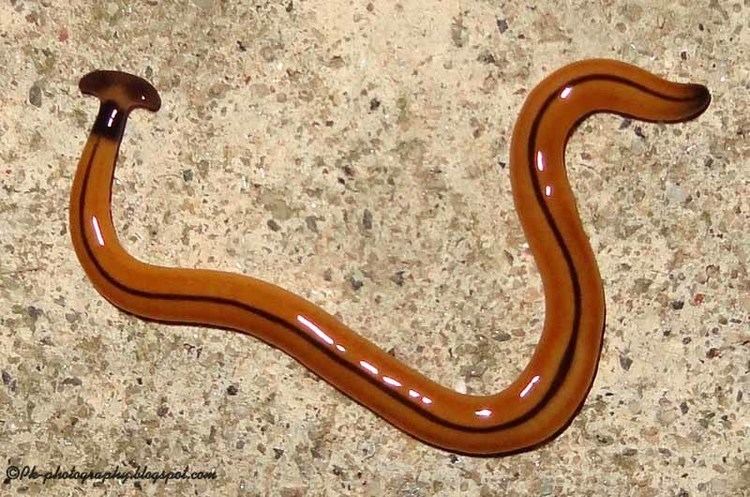 | ||
Similar Bipalium, Geoplanidae, Bipalium adventitium, Tricladida, Bipaliinae | ||
Cool facts about arrowhead flatworm land planarian bipalium kewense
Bipalium kewense is a species of large predatory land planarian with a cosmopolitan distribution. It is sometimes referred to as a "hammerhead flatworm" due to its half-moon-shaped head, but this name is also used to refer to other species in the subfamily Bipaliinae.
Contents
- Cool facts about arrowhead flatworm land planarian bipalium kewense
- Hammerhead worm bipalium kewense
- Description
- Distribution
- Feeding habits
- Toxicity
- Reproduction
- References
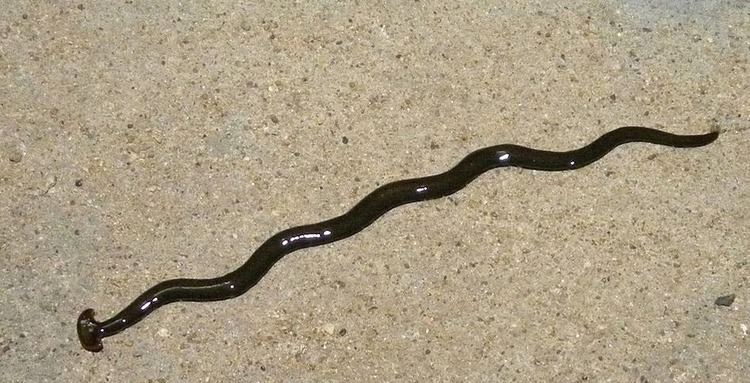
Hammerhead worm bipalium kewense
Description
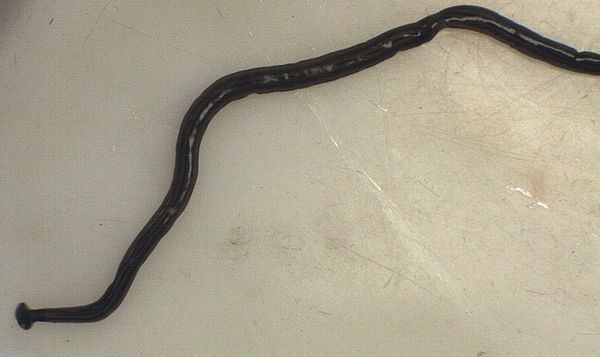
Bipalium kewense is a very long land planarian. The anterior end ("head") is expanded in a transversal semilunate shape and the body is the narrowest just behind the head, in a region called "neck". The dorsal color is light-brown with five black to grey longitudinal stripes that begin at the neck. The median and marginal stripes are narrow and black, very distinctly marked. The lateral stripes (between the median and marginal stripes) are usually grey, broad and with diffuse margins. The neck is usually marked by an incomplete black collar formed by the union of the marginal and lateral stripes. The head usually has a darker color than the background color of the dorsum. The ventral side is white and externally lined by two diffuse grey longitudinal lines.
Distribution
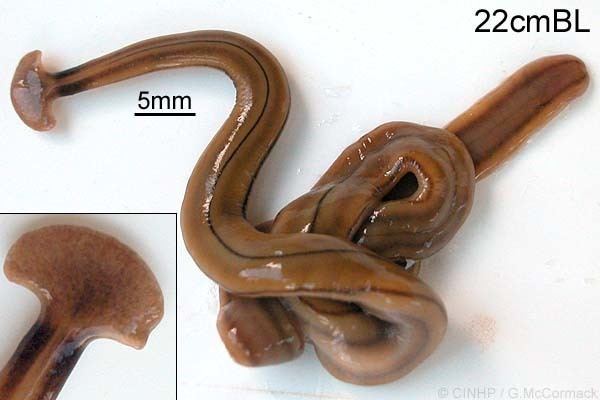
Bipalium kewense is believed to be native to Southeast Asia, but currently is found worldwide. It was probably introduced by international plant trade, as it is frequently found associated to plant pots.
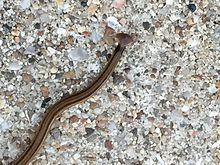
The species was first found in 1878 in the area of the Kew Park in the London Borough of Richmond upon Thames, United Kingdom, hance the name kewense.
Feeding habits

B. kewense is a known predator of earthworms. It immobilizes the prey using muscular movements and possibly toxins and then everts its pharynx, connecting it to the earthworm's body and beginning digestion. The digestion seems to be at least partially extracorporeal by means of a collagenolytic enzyme.
Toxicity
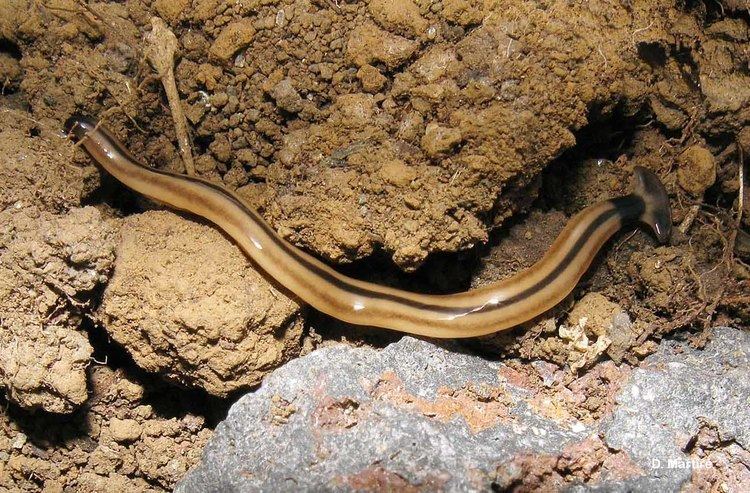
Bipalium kewense is known to produce tetrodotoxin, a neurotoxin that results in paralysis. It is possible that the toxin aids the planarian in subduing its prey as well as in protecting it against predators.
Reproduction
Every species within the Bipalium genus is hermaphroditic. However, sexual reproduction is infrequently observed as the main reproductive strategy in Bipalium kewense. Instead, asexual fragmentation predominates as the method of reproduction for B. kewense, especially in temperate climates. Despite the scarce evidence of sexual reproduction among these flatworms, there have been occasional reports of egg capsules being found. The egg capsules discovered had several of the same characteristics of those of B. adventitium, including coloration and incubation period. The most recent egg capsule discovered hatched offspring that did not bear a complete resemblance to adults and were considerably larger in size to that of B. adventitum offspring.
